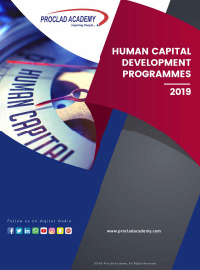Practical Pump and Valve Technology
| Ref No. | Dates | Venue | Fee (US$) | |
|---|---|---|---|---|
| ME 008 | 19 - 23 Apr 2020 | Dubai | 4500 | Register |
| ME 008 | 09 - 13 Aug 2020 | Dubai | 4500 | Register |
| ME 008 | 20 - 24 Dec 2020 | Dubai | 4500 | Register |
Practical Pump and Valve Technology
Introduction
Power plants and other petrochemical industries deal with different types of pumps and valves. Understanding the operation & characteristics of pumps and valves will have an important reflection on the process quality, equipment and plant reliability, and the economics of the whole activity. Identifying the problems associated with pumps and valves are essential for diagnosis and troubleshooting and the needed maintenance for the particular type of pumps and valves.
This training course will introduce the participants to modern methods for the design, selection, operation, maintenance and troubleshooting of pumps, valves and the related components together with inspection tools. The course will focus on pump and valve characteristics, classifications and state-of-the-art technology. Early detection of failures through presenting actual case studies will be provided during this course.
Learning Objectives
Upon the successful completion of this course, participants will be able to:
- Operate, control, maintain and troubleshoot pumps and valves in a professional manner
- Identify the various types of pumps and valves and differentiate their features and functions
- Review and improve the operating procedures and conditions of pumps and valves as well as the control loops
- Apply safe start-up and shutdown operation of pumps and valves and interpret data analysis and calculations
- Illustrate the different troubleshooting measures carried out in the operation of pumps and valves
- Employ all safety considerations and other safety measures to be followed
Target Audience
This training course is intended for process engineers, production engineers, petroleum engineers, maintenance engineers, instrumentation engineers, plant supervisors, plant technicians, shift controllers and other technical staff interested in pump and valve operation, control, maintenance and troubleshooting.
Training Methodology
This highly interactive training course will be presented using lectures, workshops and work presentations, case studies and practical exercises, videos and general discussion.
Course Outline
- Introduction
- Hydraulics – A Few Basics
- Vapor Pressure
- Pump Classification
Centrifugal Pump Basics
- Principle of Operation
- Understanding of pumping theory
- Classify characteristics of pumps
- Centrifugal Pump Classification
- Mixed Flow Pumps
- Axial Flow Pumps
- Low-pressure & High-pressure pumps
- Pumping vertically & pumping horizontally
- Single-suction & Double-suction pumps
- Single-stage, Double-stage and Multi-stage pumps
- Volute & Diffuser pumps
- Closed impeller, open, impeller or Semi-open impeller
- Casing Construction (Radially Split, Axially Split, Double Casing)
- Impeller Shrouds (Open, Partially Open, Closed)
- Shaft Position (Horizontal, Vertical)
- Wear Ring Running Clearances
- Pump Bearings
Pumps Operation Procedures
- Operating conditions
- Pump curve against piping system curve
- System curve calculation
- NPSH available and required
- Suction system configurations
- NPSH measurement
- Normal operating range
- Best operating condition
- The minimum flow rate limit
- The maximum capacity limit
- Off-design operation
- Operation difficulties
Pumps Selection
- Overall procedure in selecting a pump
- Parameters affecting the pump selections
- Properties of liquids being pumped
- Material selection
- Manufacturer data and curves
- Economic consideration
- Pumps application
- Comparison between different types
- Essential data required
Sealing Methods
- Overview (Packing and Mechanical Seals)
- Soft packing
- Difference between packing and mechanical seal
- Packing material
- Cooling methods for packing
- Packing installation procedure
Mechanical Seals
- Mechanical Seal Types/Arrangement
- Characteristics and Types of Mechanical Seals
- Applications of Mechanical Seals
- Construction of Mechanical Seals
- Materials of Seal’s Components
- Temperature Control of Mechanical Seals
- Sealing and Flushing Fluids
- Mechanical seal plans according to API 682
- Installation of Mech. Seals
- Operation and Applications
- Causes of Seal Failure
- Maintenance and Repair
- Troubleshooting of Seal Failure
Pump Failure Analysis and Troubleshooting
Shaft deflection
- Critical speed and shaft deflection.
- Parameters affecting shaft deflection
- Effects of shaft deflection on Mechanical seals and Bearings
Cavitation in pumps
- Net Positive Suction Head
- Available against required NPSH
- Symptoms of cavitation
- Effects of cavitation
- How to avoid cavitation
Positive Displacement Pumps
- Introduction
- Classification of Positive Displacement Pumps
- Rotary Pumps and their Applications
Screw Pumps
- Gear Pumps (Internal and External)
- Lube Pumps
- Vane Pumps
- Reciprocating Pumps and their Applications
- Plunger pumps
- Piston Pumps
- Diaphragm pumps
- Positive Displacement pumps failure modes
- Positive displacement pumps troubleshooting
- Valves Introduction
- Valve Types
- Valve Applications
- Manual Valves
-
- Functions of manual valves
- Methods of regulation
- Stopping/starting valves
- Control valves
- Valve end connections
- Valves rating
- Valves seating
- Types of manual valves
- Gate Valves
- Plug Valves
- Ball Valves
- Butterfly Valves
- Pinch Valves
- Diaphragm Valves
- Check Valves
- Applications
- Types of Check Valves
- Lift check valves
- Swing check valves
- Tilting-disc check valves
- Diaphragm check valves
- Safety and Relief Valves
- Valves Design
- Spring-loaded pressure relief valves
- Balanced Relief Valves
- Pilot Operated PRV
- Safety Valve Installation
- Safety Valve Material
- Safety Valve Maintenance
- Safety Valve Troubleshooting
Valves Troubleshooting
- What causes of valve failures
- How to protect the valve from wear and corrosion
- Common-Valve Problems
- Cavitation
- Flashing
- Choked Flow
- High Velocities
- Water-Hammer
- High Noise Level
- Fugitive Emission
- Installation Faults
- Inlet and outlet pipe size
- Backpressure effects
- Piping supports
- Reaction forces
- Parallel and series RV installation


